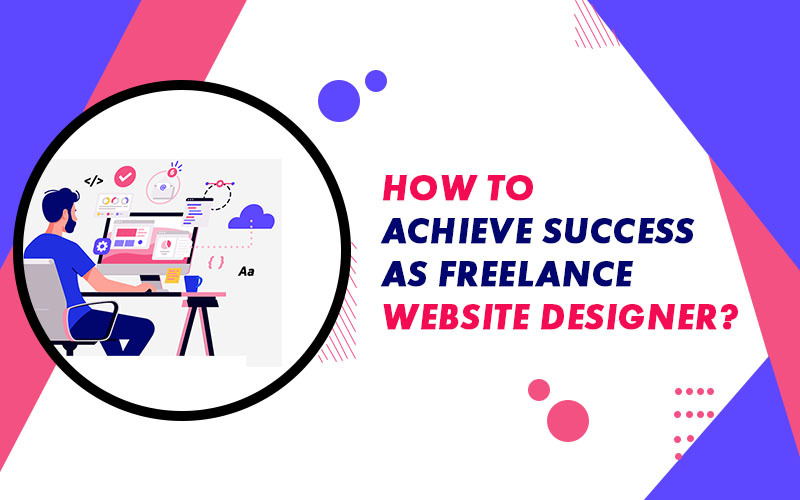Freelancing as a web designer can sometimes feel too hectic. Learning design is a lengthy, practice-based process where expertise doesn’t come easily. When one finally reaches a level to work for a fee, success in this field is still far ahead.
A freelance website designer doesn’t only learn to design before they get work but after it too. The truth is, creative skills like design, development, and graphics have no end!
You can continue learning for the longest time, and the industry would still demand more innovation and new ideas. Perhaps that makes website designers or graphic experts so passionate and devoted to their work.
If you are also learning to step into the freelance market or have developed clients but wish to grow, this article is for you! The first step to achieving success in the freelance market is understanding its dynamics.
Freelancing is unlike having a job or running a business. However, ironically it’s almost both! You also have to master the various steps of web design and have a grip on HTML, HTML5, JavaScript, and much more.
Remember, you cannot be a successful freelance website designer until you gain speed and have innovative ideas in store.
6 Ideas to Achieve Success as Freelance Website Designer
1. Understand The Freelance Market
As mentioned above, this is a key point to start with. Even if you are a skilled web designer who knows the ins and outs, not knowing the market can put you at risk.
For instance, it can be an edge for you to know beforehand what time of the year the website design services are most actively finding freelancers. This way, you can plan your schedule, ditch some plans to see more work around that month, and make more money!
You should also know what rates other freelance website designers demand (ones who offer the same quality of work as yours). Keeping yourself updated with the current rates can help you negotiate a better rate with new clients.
However, keep in mind that changing rates too often can make your clients switch to others in the short term. You may lose potential good reviews and clients who could recommend you to others by word of mouth!
2. Satisfy Your Clients
Now satisfying them doesn’t mean you have to give your all and forget that there are other things in your life! Listen carefully to what they say, and always keep a sample of your work with you. It is better to listen to the client the first time they assign you any task.
Try not to give them a chance to ask for revisions, double proofreading’s, or other stuff. A big advantage this practice offers is the trust of the client. It is crucial to gain the confidence of the clients, so they keep on providing them with what they require and make no mistakes!
Moreover, don’t miss deadlines. It is a key freelancing rule because it depends on negotiating deadlines; if you are given the flexibility to choose your deadlines by a client, use that chance wisely!
For a freelance website designer, giving them a later date is better than getting late on a committed deadline.
3. Negotiate A Good Rate
Here comes the primary concern of most freelancers out there, pay rate. Most freelancers, be it content writers, graphic designers, virtual assistants, web developers, or web designers, have the same concern: low pay compared to their efforts.
Perhaps this is because the freelance market exploits the skills of the service providers, but there could be other reasons as well. It is possible that since most freelance website designers are students, they feel like ‘something is better than nothing.
It means they settle even for a low rate and let themselves be exploited because getting a proper job is practically impossible. This way, the clients feel they can satisfy the designer with a nominal rate while all they do is fill a bare minimum.
4. Divide Your Work – Self Specialize
How you work says a lot about how far you can go with a particular skill. You need to work properly and train yourself to quickly bring up creative ideas and design a whole website in a couple of hours to win the game!
However, don’t view it as a race but an opportunity. Being competitive and stepping out of your comfort zone is always a good idea. Thus, work on yourself! The concept of ‘self-specialization’ demands that you focus on the skill you enjoy doing.
Next, practice it more often than you practice others. For instance, if writing HTML5 is your best area, practice it more often than others. Try to convince your clients that working on HTML5 can be a better option so that you get hands-on experience.
As a freelance website designer, you must enjoy each step of the process rather than stress over them.
5. Build On the In-Demand Skills
This step requires you to identify the different website design areas and research each financial potentiate. You need to know which part of the process yields the most promising money and success.
While we recommend that as freelance website designers, you focus on what you’re best at, it is also important to stay up to date. If what you’re specializing in is no longer the language people use for web development, there’s no good wasting the time.
Find the skills and design techniques that pay more if you are an expert. However, remember that any skill or expertise relating to graphics and websites isn’t going out of business trends for a long time in the future.
6. Self-Promotion
Last but certainly not least, promote yourself as a freelancer. Develop a skill set and market it on Fiverr, Upwork, Freelancer.com, and other groups or ones in your circle. In today’s world, marketing is the key to growth and improvement.
Not until people know you will they reach out for your services as a freelance website designer. Thus, put it up on your social media handles, LinkedIn, Facebook, and other places where you are likely to have a client contact you.
Conclusion:
In conclusion, work on your core interests and see things from a competitive perspective. Negotiate and come to a consensus with your clients rather than just saying yes to their offers. This way, you can surely go a long way from being a freelance web designer.
Also Read: Web Design Questions And Answers PDF




